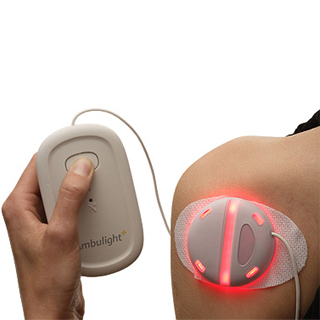
The Ambulight PDT would be displayed to members of the Society from all across Europe. The device was given CE Mark approval last year facilitating active promotion of it in Europe. The Euro-PDT is claimed to be one of Europe’s most esteemed conferences for new developments and research in all factors of PDT for skin diseases.
This conference may provide Dr Andrew McNeill, Director and Principle Scientist of Ambicare Health the chance to exhibit the company’s research apparently for the first time on Ambulatory light sources for PDT.
Ambulight PDT is claimed to be the world’s first skin cancer treatment by means of a minute disposable light releasing sticking plaster worn by the patient. This is supposedly used in combination with a prescribed pharmaceutical, for the treatment of non-melanoma skin cancer. This plaster appears to offer PDT treatment straightaway to the skin lesion site.
Ian Muirhead, CEO of Ambicare Health, commented, “The Ambulight PDT is the most advanced ambulatory PDT device to treat non-melanoma skin cancer to be developed to date. We believe that it is the future for this kind of treatment; Ambulight PDT will reduce costs for the healthcare provider by freeing up hospital day patient beds or cubicles and improve patient care by allowing them to continue with their normal daily lives during treatment. The Euro-PDT congress is an important platform for us to demonstrate the technology and research that has been years in the development and to further emphasis the benefits this revolutionary product could bring to a global market.”
The device supplies healthcare providers the chance to alter patient care by enabling PDT to be more available and facilitating patients to carry on with their usual daily routine while going through PDT treatment.
Moreover, pilot clinical trials supposedly have specified that this treatment method appears to have lower pain as opposed to traditional techniques whilst still acquiring a corresponding result.

